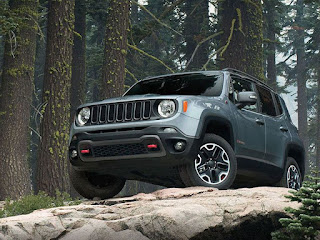When do you put your vehicle in 4-Wheel Drive? Usually there will likely be occasions whenever you as well as your 4×4 offroad vehicle will likely be put within a scenario exactly where you will need to engage 4-wheel drive. Living within a spot like Colorado where the weather can change without notice, it is constantly a good idea to know how to operate your vehicle and pick the proper setting for the drive train when the climate takes a turn for the worse. But how do you know when it is proper to engage 4-wheel drive, and what setting is best?
The primary goal of 4-wheel drive would be to help your vehicle get a lot more grip to the surface in a low-traction situation. A great time to place your vehicle in 4-wheel drive will be when the roads are slippery from ice, you are driving in mud, climbing a steep hill, there’s no paved road, driving offroad, or you can find uneven surfaces. In case you vehicle is sliding, slipping, or failing to get decent traction, it is possibly time to engage 4-wheel drive. Performing so however might lead to lower gas mileage, so only use it when proper and necessary. Some automobiles with All-Wheel Drive systems or Full-Time 4WD don’t call for any input from the driver, so if you’re car has either of these systems you are currently very good to go!
Now that we’ve established when it’s appropriate to engage 4-wheel drive, it is time to make a decision whether or not to use 4-High or 4-Low. It is crucial to know the difference between the two and when to use one particular or the other, otherwise you can cause damage for your vehicle’s transfer case. Ahead of placing your vehicle in any gear, be sure it’s in neutral initial.
The facts about 4-High: 4-High allows your vehicle to drive at rapidly speeds (manufacturers usually recommend no faster than 55mph) whilst power is sent to all four wheels supplying your car with far better traction than 2-wheel drive. Depending on the application, most drivers will use 4-High more routinely than 4-Low. This setting is utilized when extra traction is necessary on account of snow, ice, muddy roads, rocky roads and also other slippery conditions.
The information about 4-Low: 4-Low supplies your vehicle with drastically a lot more torque, allowing your vehicle to get out of difficult circumstances. When using 4-Low, it is important to keep your vehicle at slow speeds. If you’re in 4-Low and really feel the urge to drive more than 10mph, chances are your vehicle can handle the road conditions in 4-High without any problem. Use 4-Low on really slippery surfaces, quite steep inclines, heavy snow, climbing or descending boulders, powering via thick mud or sand or driving via deep water.
The primary goal of 4-wheel drive would be to help your vehicle get a lot more grip to the surface in a low-traction situation. A great time to place your vehicle in 4-wheel drive will be when the roads are slippery from ice, you are driving in mud, climbing a steep hill, there’s no paved road, driving offroad, or you can find uneven surfaces. In case you vehicle is sliding, slipping, or failing to get decent traction, it is possibly time to engage 4-wheel drive. Performing so however might lead to lower gas mileage, so only use it when proper and necessary. Some automobiles with All-Wheel Drive systems or Full-Time 4WD don’t call for any input from the driver, so if you’re car has either of these systems you are currently very good to go!
Now that we’ve established when it’s appropriate to engage 4-wheel drive, it is time to make a decision whether or not to use 4-High or 4-Low. It is crucial to know the difference between the two and when to use one particular or the other, otherwise you can cause damage for your vehicle’s transfer case. Ahead of placing your vehicle in any gear, be sure it’s in neutral initial.
The facts about 4-High: 4-High allows your vehicle to drive at rapidly speeds (manufacturers usually recommend no faster than 55mph) whilst power is sent to all four wheels supplying your car with far better traction than 2-wheel drive. Depending on the application, most drivers will use 4-High more routinely than 4-Low. This setting is utilized when extra traction is necessary on account of snow, ice, muddy roads, rocky roads and also other slippery conditions.
The information about 4-Low: 4-Low supplies your vehicle with drastically a lot more torque, allowing your vehicle to get out of difficult circumstances. When using 4-Low, it is important to keep your vehicle at slow speeds. If you’re in 4-Low and really feel the urge to drive more than 10mph, chances are your vehicle can handle the road conditions in 4-High without any problem. Use 4-Low on really slippery surfaces, quite steep inclines, heavy snow, climbing or descending boulders, powering via thick mud or sand or driving via deep water.
See also
Tags
Cars
